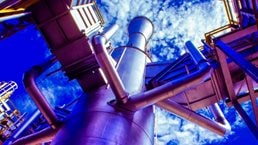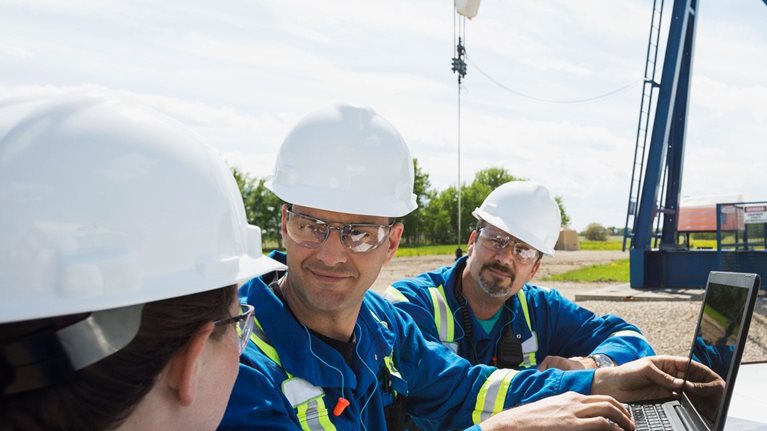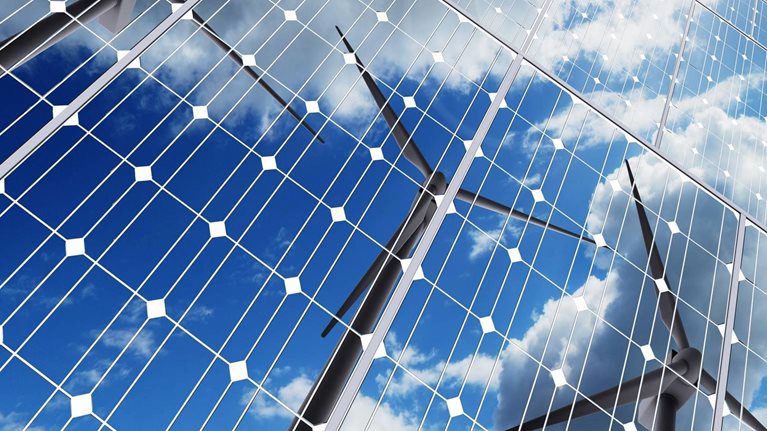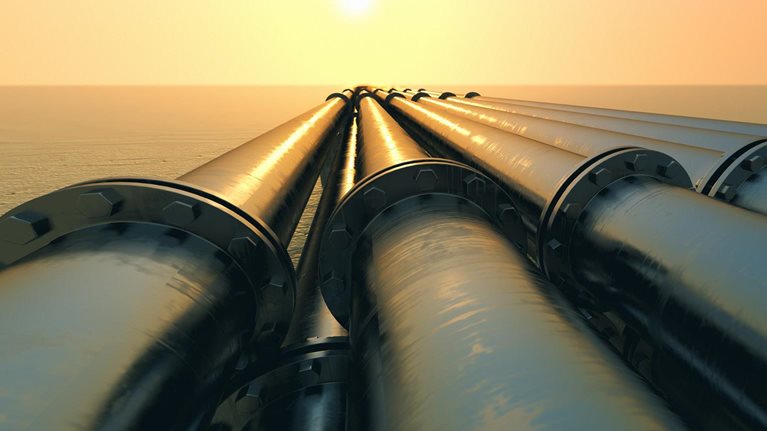Five technologies will change the oil and gas industry: mobile will speed oilfield transactions, increase efficiency, and improve safety by removing people from harm’s way; the Internet of Things (IoT) will reduce the cost of repairs; machine learning will provide ever more optimal solutions to field challenges; robotics will upend the question of who does the work, and blockchain will make contracting faster and smoother than ever before.
Adopting these technologies will be a challenge for many in our industry, requiring a change in mind-set. Engineers tend to focus less on investing for the future than on fixing what’s broken now, as do companies trying to maximize their return on investment. But investments in these transformative technologies now will mean less to fix in the future, and more time to innovate, operate, and develop resources as fully as possible—which is what we’re all trying to do, correct?
Let’s look at how a repair for a typical production well might play out just a few years from now using mobile, the IoT, machine learning, robotics, and blockchain.
The case of AB-123’s leaky gasket
Something is up with well AB-123. A machine learning program called WellHealth, which monitors thousands of wells, has looked at 27 similar incidents and suspects a leaking gasket. WellHealth sends a text to the duty engineer asking permission to dispatch a field technician to inspect AB-123.
The engineer sends a text back, asks about the cost, and when the next scheduled visit to the well will be. WellHealth looks up the ten most recent field visits and reports that an inspection visit will probably cost $150 and that the next scheduled visit will be in 90 days.
The engineer texts, “OK, and send me the results,” and WellHealth issues a work bid request to TheRoughneckList, an online marketplace for service requests. The bid request specifies the required certifications for a field technician, sets a minimum supplier review rating, describes the job in detail, and provides the delivery window. Thirty minutes later, WellHealth has received and considered 22 offers. It selects Hrishika, who bid $99, and included a free LIDAR survey of the well site. WellHealth sends Hrishika a smart contract which she accepts. The bot puts $99 into a blockchain-based escrow account. Hrishika receives confirmation of the deposit, hops into her truck, and drives to the site.
Would you like to learn more about our Oil & Gas Practice?
When she gets to the turn-off from the main road, she launches a drone from the back of her truck to fly ahead and locate the well. She does this to avoid time-wasting wrong turns and to scout washed-out roads. As it guides the truck to well AB-123, the drone begins to inspect the well with visible, infrared, ultraviolet, radio, X-ray, and acoustic sensors. Hrishika reviews the drone’s data as the truck drives itself the last 2 kilometers to the well. When she arrives, she goes straight to work. It looks as though WellHealth was right; a gasket is leaking. After taking a look to confirm, Hrishika emails a report to WellHealth and quotes a price to replace it. WellHealth confers with the engineer, who approves.
The gasket does not weigh much, so WellHealth orders a replacement gasket kit from DigitalOilfieldSupply and 35 minutes later a drone drops the package at the well site where Hrishika is waiting.
While DigitalOilfieldSupply’s drone was on the wing, Hrishika watched a YouTube video describing exactly how to replace the gasket. She read in the comments section that the valve cover is heavy and can fall on your feet if you don’t secure it before you remove the bolts.
The gasket in hand, tools in the pouch, she executes the repair in the standard 90 minutes, each step recorded and audited by the camera on her hardhat, and by the drone circling behind her.
When she has packed up all her gear, her chatbot, WorkReports, presents a work package of forms, videos, annotated photos, and inspection scans for WellHealth’s approval. After Hrishika has made a small edit, WorkReports sends the package; WellHealth reviews it; checks that AB-123’s pressure has returned to normal; releases the escrow funds; awards Hrishika a 5-star review on TheRoughneckList; updates the maintenance logs; and sends a partial billing statement to working-interest owners, per their contracts.
While elements of this story may seem a little far-fetched today, every single component we have mentioned either is available, or at an advanced stage of development.
The five technologies
The five technologies that will change the way the industry operates—all of which played a role in the story of AB-123 and its leaky gasket—are mobile, the Internet of Things (IoT), machine learning, robotics, and blockchain.
-
Mobile technology is familiar to us all and has already transformed thousands of processes such as calling a taxi, or accessing schematics on a job site. In ten years, our grandchildren will laugh as we try to explain what a boarding pass was, or how we went to a store to buy music, or to a bank to get cash—whatever cash was. Even physical passports may have disappeared. And, in the oilfield, mobile technology will let technicians like Hrishika bid for a project, accept the assignment, and file the work report when they have finished, no matter what time it is or where they are.
While there are no revolutionary breakthroughs expected in mobile, what is happening is a continuous march down the cost curve. As a result, the ability to provide connectivity to smaller and cheaper components, in more and more remote areas, continues to grow. We expect that by 2025 every well in the Western Hemisphere will have access to 4G cellular at a cost-competitive rate.
-
The Internet of Things (IoT) is the network of physical objects—devices, vehicles, buildings, and others—equipped with electronics, software, sensors, and Internet connections that enable them to collect and exchange data. We already have many networked sensors in our industry for the remote monitoring and control of refineries, pipelines, pumps, and platforms. However, as the cost of devices continues to drop, we will see many more applications in well-monitoring, drones, and vehicle guidance, to name a few.
An example of the profound change occurring can be found in the registration of cellular telephone numbers. Many new cars today have hidden cell phone systems that transmit performance data, download maps, and so on. In the first quarter of 2016, more cars were registered for phone numbers in the US than were personal cell phones. A report issued by the networking company Cisco estimates that there will be 50 billion devices connected to the Internet by 2020, collecting and sending information, and receiving instructions. That is more than seven devices per living person.
-
Machine learning is the capability of computers to understand how to do something without having been explicitly programmed to do it. A high profile example is a system that, by watching videos of people driving a car, “taught itself” how to drive. If a computer can teach itself new strategies gleaned from its experience, then its analyses will improve over time without the need for human intervention.
In this way, the WellHealth bot will get ever better at understanding the underlying problems—and the optimal solutions—indicated by out-of-spec conditions at a well. Opportunities for machine learning–based systems cover a wide range, from invoice processing, through failure prediction for equipment and control rooms, to autopilots for helicopters.
-
Robotics is probably the oldest known technology in this list, but it has undergone dramatic changes in the last five years. Where once limited to fixed locations such as factory assembly lines, the development of high-quality electric motors, and low-cost navigation systems have caused an exponential increase in the number of flying, driving, and swimming robotic systems. In almost all cases their main benefit is that a person does not need to place themselves in a potentially risky situation to either gather the same data or execute a task.
We expect that the number of robotic systems working in oil fields around the world will be nearly a million by 2025. Some will live permanently at a facility such as a refinery, while others will be a part of a technician’s toolkit, as we saw in the story of AB-123. As prices continue to fall, the number of uses for robotics systems will multiply.
-
Blockchain is a digital ledger that records financial transactions. It is best known as the technology that underpins the virtual currency, Bitcoin, but, it is poised now to simplify contracting and transacting everywhere. Financial services companies, for instance, are testing it as a way to remove clearinghouses and other intermediaries from financial transactions.
In the oil and gas industry, anywhere a contract for performance is required there is a chance it will migrate to a blockchain-enabled agreement. Such contracts may include land royalty, production sharing, or service execution contracts. In each case, the promise of the technology is that agreements can be created, executed, and maintained in a cheaper, more transparent and efficient manner.

A billion-dollar digital opportunity for oil companies
These technologies will increase safety and save you money
These technologies will be key to operating more effectively, and safely, at lower costs. Given what we know about the availability of supply and known reserves of unconventionals that can be brought online quickly at each price level, the next ten years likely will be an era of industry restructuring and cost optimization. But that cannot be done at the expense of safety. These five technologies are critical enablers. Together they can significantly increase the overall efficiency of routine processes by eliminating steps and reducing downtime between tasks. Moreover, they will improve safety, for instance by saving our field tech the need to drive to fetch supplies.
Over the next few years, it will be important for oil and gas companies to track them and their applications, and to participate in their development and adoption. Some applications may rise gradually in the industry; others may rapidly reach a tipping point where processes shift overnight to the new way of working. The move from employees to freelance contractors for field work (the Uber paradigm) could occur quickly under certain conditions; for example, continued cost pressure, a viable “marketplace” app, and rapid adoption in a region. However these technologies evolve, and at what pace, it will be better to run ahead of the curve than behind it.


